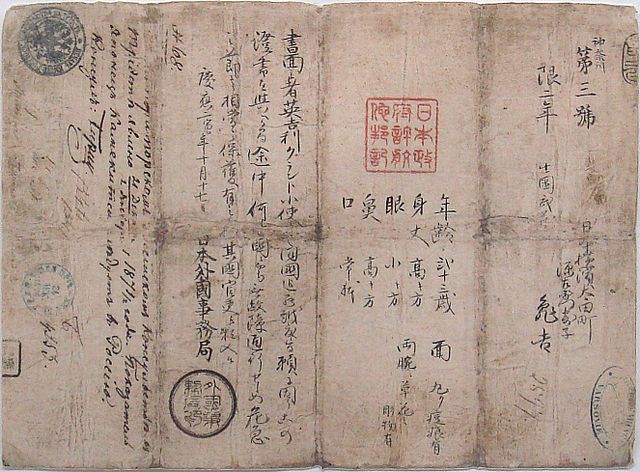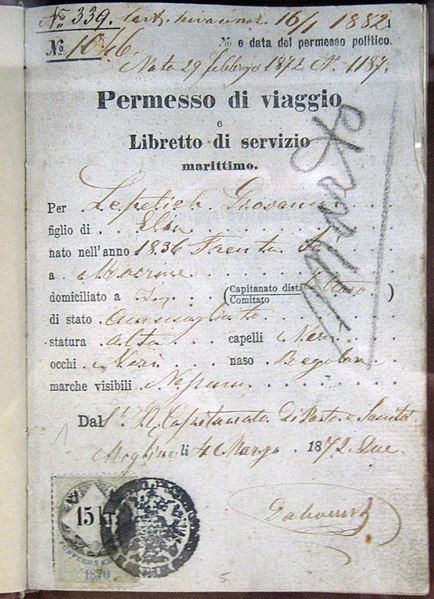A national coat of arms is a symbol which denotes an independent state in the form of a heraldic achievement. While a national flag is usually used by the population at large and is flown outside and on ships, a national coat of arms is normally considered a symbol of the government or the head of state personally and tends to be used in print, on armorial ware, and as a wall decoration in official buildings. The royal arms of a monarchy, which may be identical to the national arms, are sometimes described as arms of dominion or arms of sovereignty.
The Finnish coat of arms on the front cover of a Finnish passport with both Swedish and Finnish text.
The US coat of arms on the front cover of a United States passport.
The Soviet Union "socialist coat of arms" on the front cover of a Soviet Union passport
A passport is an official travel document issued by a government that contains a person's identity for international travel. A person with a passport can travel to and from foreign countries more easily and access consular assistance. A passport certifies the personal identity and nationality of its holder. It is typical for passports to contain the full name, photograph, place and date of birth, signature, and the issue and expiration dates of the passport. While passports are typically issued by national governments, certain subnational governments are authorised to issue passports to citizens residing within their borders.
Clockwise, from top left: Dutch ordinary, Nepalese diplomatic, Chinese service, and Polish ordinary passports
Passport control at Dubai International Airport
First Japanese passport, issued in 1866
Italian passport, issued in 1872







